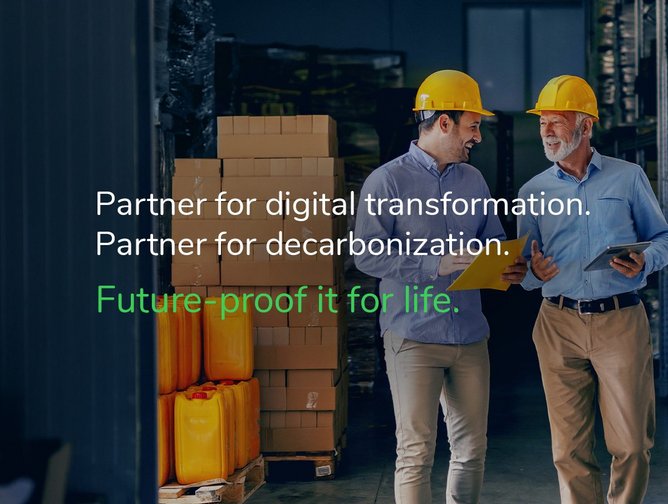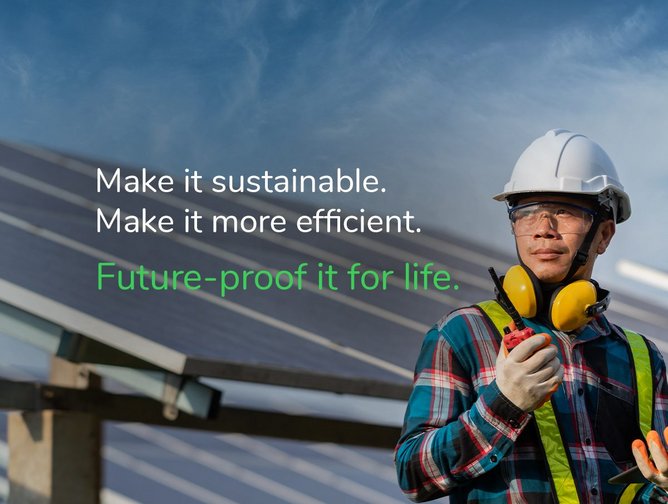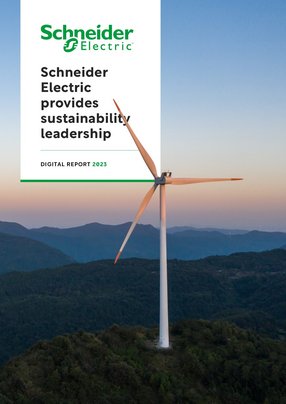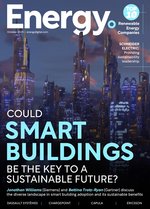There need not be disparity between small-to-medium enterprises (SMEs) and the multinational companies (MNCs) that seemingly tower above them in the race to sustainability. In fact, businesses are linked more than they realise, which is why the world is entering a more collaborative state whereby businesses become partners and goals are unified.
This is particularly so in the case of supplier and customer interactions as relationships between parties are critical in helping them build resilience and reduce their overall impact in line with all Scope emissions.
There are two factors to this. Firstly, there’s the understanding of the necessity and the opportunities presented to businesses when they take climate change on board as a key component of business. And several elements are to be considered here by businesses as a part of their business strategy:
- Regulatory: with increasing constraints & incentives for businesses to decarbonize coming to enforce the “Net-Zero World” such as the CSRD from the EU.
- Resilience: with Climate change in any case underway, ensuring healthier but also more robust business practices that mitigate associated risks.
- Competitiveness: Being in tune to existing and emerging customer demands regarding one’s own carbon footprint and commitment.
The second is the move from plans to tangible, measurable and replicable actions and, these days, technology is at the heart of achieving new outcomes with lasting impacts.
This is where partnerships can really help accelerate the transition to more sustainable systems and reconcile business and sustainability, creating wealth and growth, while actively contributing to the protection of our common heritage and the planet. Thanks to Schneider Electric and its approach to its business ecosystem, there are myriad SMEs across the globe developing their knowledge and activities to mitigate climate change.
Enabling these kinds of actions to take place is not simply done by chance. Sorouch Kheradmand, tells us how the multinational energy management and digital automation businesses positively impacts supplier and customer perception to bring them on board with a sustainable way of thinking.
Having worked his way up the chain from an engineering position to his influential role at Schneider, Kheradmand is able to work closely with partners. This is not only to share its insights into climate change but also to deliver the tools to allow large companies and SMEs alike to deliver on their own targets while simultaneously meeting demands of their own suppliers and customers. Initially sceptic about how business could answer profitably to the climate crisis, Kheradmand is now focused on delivering his advocacy to a worldwide network of businesses to drive a significant impact, at scale.
“Schneider is very active in decarbonising its operations, and I said ‘what can we take from that and actually apply to our ecosystem of suppliers, partners and customers?’” says Kheradmand. “We reached out to our customers, we listened to them, we saw that there is a willingness to do something. But we needed to make sure people understood what was in it for them and how they could walk the talk.”
Sustainability needs to be demystified and made tangible
What quickly came to light was the need to make sustainability tangible—ie, how can you measure your impact on the climate when you can’t directly visualise it?
The word ‘tangible’ marks the first stage of Schneider Electric’s strategy, which is completed by realising impact and understanding how to benchmark sustainability using data on environmental, social, and governance (ESG) metrics. This is where Kheradmand really tapped into his desire to educate—one that was formed during his career journey. He recognised that businesses must first understand their impacts in simple terms; facts, figures and data that is objective to the organisation.
“This means marrying the science of sustainability—and to start carbon—and the art of business, which basically refers to how you gain customers and improve your market footprint, margins, costs, and increase prices,” says Kheradmand.
“We tried this with our customers. We went to them, sat with them and figured out plenty of solutions already exist. It’s a science and you need to be very specific and particular about what you want to deliver. It needs to be tangible, measurable and reproducible.”
This first stage influenced the founding of the Schneider Electric Sustainability School. This free initiative helps train stakeholders in carbon measurement, management, and further processes to ensure that their businesses can be sustainable long term.
The programme helps businesses to first gain knowledge of their impacts and the opportunities available to them. The second step to be launched in October 2023 covers decarbonisation strategy, enabling organisations to achieve their goals using digital tools to monitor their carbon footprints. Thirdly, Schneider is dedicated to teaching SMEs how they can reap the commercial benefits, such as lower costs, better efficiencies, and the ability to market their environmental impacts as a key differentiator, doing so in a way that is true to the science sustainability.
Dealing with this step is a matter of mindset. As Kheradmand explains “Sustainability today is kind of like digital was 20 years ago”, in a sense that transformation was seen as a ‘must’ without really understanding the business dynamics nor the position to measure the impacts of technologies over time. The same process is happening with businesses and their sustainability impacts, which is why it’s important to understand the current situation and actions that can be taken with stable effects economically. This is where Schneider Electric sustainability approach is framed around three axes: Strategise (by measuring your footprint to build an achievable ambition), Digitise (by measuring and tracking progress regularly), Decarbonise (by taking the steps to make one’s business less carbon intensive and more sustainable).
Supporting targeted decision making through digital tools
Having avoided aimlessly making changes to become more sustainable, it’s time for businesses to begin measuring and taking actions that are in line with their operating model and have measurable Return on Investments (ROI). Technology is a key component of this step and Schneider delivers a solution it calls Zeigo Activate.
Zeigo Activate is destined to digitise this whole thought process to plan, act and track. It is usable regardless of your own Sustainability expertise and is designed to streamline the user’s action plan to become more efficient down to execution, by leveraging an open marketplace of service providers that can support you to carry any changes, such as switching out legacy technologies for more up-to-date ones or even adopting entirely new systems for renewable energy or power management.
Leveraging this tool will enable SMEs and beyond to assess and eliminate their emissions in Scope 1 and 2, and Schneider is working to deliver Scope 3 reduction capabilities, which will likely require integration with inter-organisational data.
“Simply by comparing business KPIs and adding Sustainability KPIs in the mix, you start building a framework that is much better for decision making, because you see the possibilities. One solution may have a great impact on the climate, but a terrible impact on your business and its profitability,” says Kheradmand.
“However, you may find a few more actions that have a similar impact on your footprint, but a much better, even profitable, business-friendly, business impact, ideally even a competitive advantage.”
The idea explained by Kheradmand is to look for and focus first on sustainability ‘wins’ that are economically beneficial for the business—ultimately suggesting there could be a number of actions to take that present low or no impact commercially. At the end of the day, the aim is to limit impact rather than advocate for it.
“I started testing this view with my customer category. Of course, we quickly found a few issues they wanted to address; we had quite a few successful campaigns with them and tangible examples to draw from onwards,” says Kheradmand.
“The beauty of Schneider Electric is that we have so many solutions for the active management of building infrastructure, data centres, “active” being basically what we call technologies impacting the way an asset behaves during its operational lifetime.”
What Kheradmand’s metaphor represents is the strategy taken to cement some sustainable processes that are easily implemented while being embedded into the business, before focusing on much larger programmes to tackle ever-evolving problems. His view is that maximising such actions at a large scale is where the focus should be first to fight climate change while continuing to create wealth and prepare for the next wave of investments.
Building trust allows Schneider Electric to really make an impact on its ecosystem in a positive way with the aim to create a ripple effect whereby SMEs communicate with their suppliers and customers about their achievements and strategic planning and this creates a virtuous and self-maintained momentum towards large scale decarbonation across the industry.
“A strategy always starts from the market, and therefore customers. When you look at a strategy, it’s about understanding where you are today—where your market is today—where your current and potential new markets will be in the next five years, and also where you want to go in those five years, picking the right fights” says Kheradmand.
Referring back to the need for data, it’s clear from this conversation that it’s the starting point for most actions taken in the name of emissions reduction. Moving forward, Schneider’s initiatives will seek to recognise sustainability as an imperative and share tips for management and process implementation. To recognise these impacts, the company set up the Sustainability Impact Awards, which acknowledges the high achievers within its partner, supplier and customers networks.
“We launched the Sustainability School—Chapter 1—in April earlier this year. The same year as for the Impact Awards, the first session of which was held eight months ago,” says Kheradmand.
“Now, it’s about turning it beyond building that market awareness; beyond that education to actually go after tangible, measurable, replicable actions and claims. This means giving the tools and the means to our partners and customers in the market to act on their footprint.”
To summarise these points, Schneider Electric is committed to partner support as it recognises both the demand for Scope 3 emissions reduction, but also the barriers that its ecosystem faces in meeting mere Scope 1 and 2 requirements. By bringing sustainability to the forefront of the business, naturally it will enable and incentivise its ecosystem to follow with more impact rippling down the supply chain.
This impact will be achieved through a “toolbox”, a variety of easy to access digital tools, among which Zeigo Activate, the Sustainability School and much more, to enable companies in making emissions reduction more achievable and profitable. To recognise this process for both its challenges and its success, the Sustainability Impact Awards rewards great achievements seen by partners and customers that are willing to take positive action, with more programs underway to push this momentum forward.






